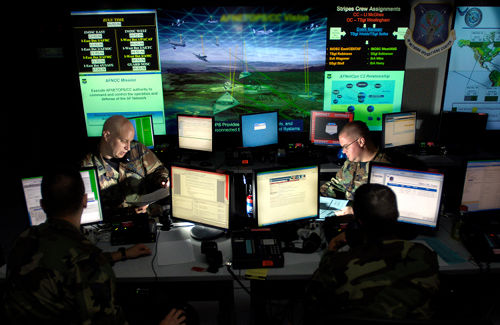With Army Gen. Keith Alexander named as its first commander, U.S. Cyber Command has a challenging mission and Alexander a demanding job.

Army Gen. Keith Alexander, the new commander of U.S. CyberCom.
(Credit: National Security Agency)Receiving a promotion to four-star general, Alexander on Friday was officially given the reins of U.S. Cyber Command by Defense Secretary Robert Gates during a ceremony in Fort Meade, Md. That signaled the initial launch of the division, which won't be up to full capability until October 1.
The mission of U.S. Cyber Command, or CyberCom, is to synchronize the Defense Department's various networks and cyberspace operations to better defend them against the onslaught of cyberattacks.
"Given our increasing dependency on cyberspace, this new command will bring together the resources of the department to address vulnerabilities and meet the ever-growing array of cyberthreats to our military systems," Gates said in a statement.
Last June, Gates approved the birth of Cyber Command as a unified, subdivision of U.S. Strategic Command to manage the Defense Department's resources of 15,000 computer networks across 4,000 military bases in 88 countries. The launching of U.S. CyberCom had been stalled, awaiting Senate confirmation of Alexander. But with Senate approval having been cleared on May 7, CyberCom is now free to open for business.
About 1,000 people will work at CyberCom at Fort Meade, with most of them moving over from existing jobs.
Concerns have been raised, notably by Air Force Gen. Kevin Chilton--the commander of U.S. Strategic Command--over the segregation that currently exists among the different cybernetworks and information resources across the military.
"This segregation detracts from natural synergies and ignores our experience in organizing to operate in the air, land, sea, and space domains," Gates said before the House Armed Services Committee in March. "The establishment of U.S. CyberCom will remedy this problem in the cyberdomain."
To integrate the military's vast cyber-resources, Deputy Defense Secretary William Lynn III has spearheaded the effort to launch CyberCom. With the U.S. military more dependent on information technology than forces in other countries, Lynn believes the military must be able to safeguard its own networks and be free to utilize them across the world.
"We want to be able to maintain those advantages and protect the military missions, and that is the main mission of Cyber Command; it is to protect the military networks," Lynn said in a statement. "It will have a role, though, in protecting the government's networks and critical infrastructure."
Coordinating all of the disparate agencies with a role in cyberdefense has been a huge challenge, as different groups in government have struggled to map out their own agendas. But Lynn seems optimistic that CyberCom can also help clean up some of the bureaucratic snafus and turf wars.
"It will be the place where the Department of Homeland Security will come to on cybersecurity matters," Lynn said. "And it will help rationalize the interagency process."
Since the initial inception of CyberCom almost a year ago, the military has been busy prepping it for launch, according to Lynn. People have been trained, task forces have been set up, investments have been made. Officials from the DOD have also worked with defense companies to focus on both cyberthreats and best practices. Lynn himself has traveled to Great Britain and Australia and will go to Canada to discuss how best to share common threats and technologies.
Questions still remain about the muddy legal waters of cybersecurity. What is considered a cyberattack? How do countries respond to them?
"We're in the midst of a series of meetings the White House is leading to work through a lot of those legal issues," Lynn said. "We've made progress organizationally, industrially, and internationally, but the legal regime in particular is an area we need to tackle further."
But other challenges await the new Cyber Command, especially with the growing threat of cyberattacks.
"It doesn't take the resources of a nation state to launch cyberwar, "noted Lynn. "Nations still have the best capabilities, but you can do very threatening and damaging things with modest investments...Our ability to predict where the threats are coming [from], even in conventional threats, is remarkably poor. We didn't see Desert Storm coming. We didn't see the series of events that led to Afghanistan. Foreseeing the threats in cyberspace is harder. With Cyber Command, I think we need to be prepared for the unexpected."
Like this post?Why not to Subscribe to Trend Internet Security news by Email for FREE













